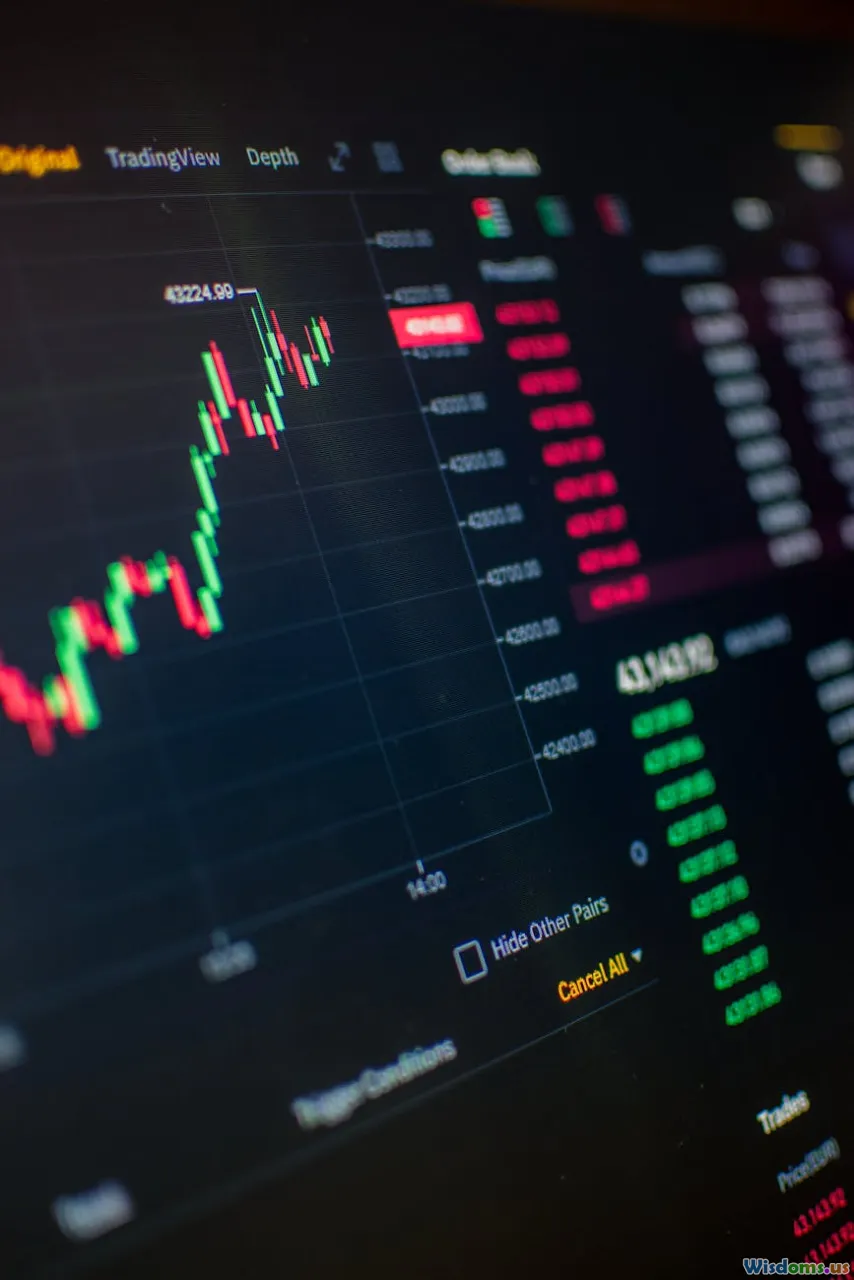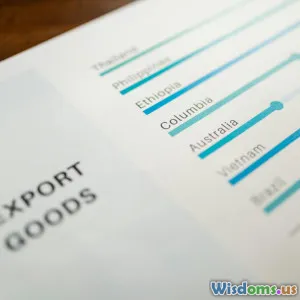
Evaluating Quality Stocks in a Volatile Market
8 min read Master how to identify quality stocks even when markets swing wildly to make smarter investment choices. (0 Reviews)
Evaluating Quality Stocks in a Volatile Market
Investing in stocks can feel like navigating a turbulent sea, especially when financial markets are volatile. Price swings, economic uncertainties, and geopolitical events create an environment where panic often thrives and rational thinking may falter. Yet, history shows that even in the most volatile markets, quality stocks not only endure but frequently emerge stronger. The art and science of identifying these stocks during chaotic times is invaluable for any investor who wants to safeguard and grow their portfolio.
In this article, we’ll dive into a systematic approach to evaluating quality stocks in volatile markets. We'll explore the importance of fundamental financial health, competitive advantages, valuation methods, and qualitative factors that help distinguish resilient companies from those at risk.
Understanding Market Volatility: An Investor’s Challenge
Volatility refers to the degree of variation in stock prices — rapid ups and downs — which often accompany market stress. For instance, during the COVID-19 pandemic in early 2020, the S&P 500 index fell nearly 34% in just over a month before rebounding later in the year. This stark fluctuation left many investors scratching their heads, unsure of whether to hold, sell, or buy stocks.
Amid such unpredictability, quality stocks often demonstrate some level of resistance. This resilience comes down to the underlying strength in business models, finances, and management, rather than mere price momentum.
How to Define a Quality Stock?
Before knowing how to evaluate one amid volatility, it helps to define what “quality” truly means in investment terms:
- Strong and Consistent Earnings: Reliability in profit generation over multiple market cycles.
- Robust Balance Sheet: Low debt levels and healthy cash flow to weather downturns.
- Competitive Advantages: Strong brands, patents, network effects, or cost leadership that protect market position.
- Sound Management: Transparent, shareholder-focused executives who navigate challenges effectively.
- Reasonable Valuation: Attractive price relative to intrinsic worth.
A company might fit some but not all of these fundamentals. The goal is to find businesses that lean heavily in these virtues.
Evaluating Financial Strength in Volatile Times
1. Analyze Earnings Quality and Stability
Volatile markets often expose companies with fragile earnings. Look for firms with consistent profitability expressed through metrics such as:
- Earnings Per Share (EPS) Growth: Has the company maintained or increased EPS despite market conditions?
- Return on Equity (ROE): A high and stable ROE typically signals efficient use of shareholder capital.
- Operating Cash Flow: Positive and consistent cash flow can indicate genuine earnings strength versus accounting tricks.
Example: Apple Inc. (AAPL) has demonstrated over a decade of steady EPS growth and very strong operating cash flow, which has bolstered investor confidence even during downturns.
2. Assess the Debt Profile
High debt can be a death sentence in a downturn, especially with rising interest rates. Important indicators include:
- Debt-to-Equity Ratio: Ideally moderate or low to allow flexibility.
- Interest Coverage Ratio: Measures income to interest expense—higher ratios signify safety.
Real-world Insight: During the 2008 financial crisis, companies with excessive debt, such as General Motors pre-bankruptcy, struggled significantly compared to well-capitalized peers like Johnson & Johnson.
Identifying Companies with Durable Competitive Advantages
Volatility forces investors to look beyond numbers and assess qualitative moats that help companies protect their profits. Some traits:
- Brand Strength and Customer Loyalty: Enables pricing power.
- Network Effects: Platforms like Facebook benefited from increased user engagement despite crisis.
- Cost Advantage: Low-cost producers like Walmart often outperform during recessions.
Investor Warren Buffett emphasizes the importance of businesses with "economic moats," meaning they possess sustainable competitive edges that fend off competitors.
Valuation: Buying Quality Stocks at the Right Price
Quality alone isn’t enough if the stock is overpriced. Volatile markets can distort valuations, creating both opportunities and traps.
- Price-to-Earnings (P/E) Ratio: Compare with historical averages and sector peers.
- Price-to-Book (P/B) and Price-to-Cash Flow ratios: Provide insight into asset quality and cash generation.
- Discounted Cash Flow (DCF): Used by investors to estimate intrinsic value based on forecasted cash flows.
Consider the example of Microsoft during the 2000 tech bubble burst; its strong fundamentals and attractive valuations post-crash made it a rewarding investment despite the dismal broader tech market.
Navigating Volatility with a Long-Term Mindset
Short-term price fluctuations can tempt many into panic selling. Yet, as demonstrated by billionaire investor Peter Lynch, patience is key. Focusing on the core strength of quality businesses keeps investors grounded.
Tips for Practicing a Long-Term Strategy:
- Diversify: Own a basket of quality stocks across sectors to minimize idiosyncratic risks.
- Rebalance Gradually: Avoid knee-jerk reactions; rebalance portfolios systematically.
- Stay Informed: Monitor earnings reports and macroeconomic trends to adjust holdings intelligently.
Conclusion: Quality Stocks as Anchors in Stormy Markets
Volatile markets test an investor’s discipline and analysis skills. However, identifying and investing in quality stocks can offer a margin of safety and potential for growth even when prices swing wildly.
By focusing on solid financials, competitive moats, and reasonable valuations, investors can discover companies positioned not only to survive but to thrive through market uncertainty.
The key takeaway? Quality isn’t just about numbers — it’s about enduring business strength. Market turbulence is inevitable, but with careful evaluation and patience, quality stocks shine as beacons for long-term wealth creation.
As Andrew Carnegie aptly put it, "Watch the margins, and the dollars will take care of themselves."
References & Further Reading:
- Buffett’s Students on Quality Investing, Columbia Business School, 2020
- Morningstar: Financial Health Indicators Explained, 2023
- S&P Dow Jones Indices: Market Volatility Statistics 2020–2023
- *Warren Buffett Letters to Shareholders, 1989–2023."
Rate the Post
User Reviews
Popular Posts





















